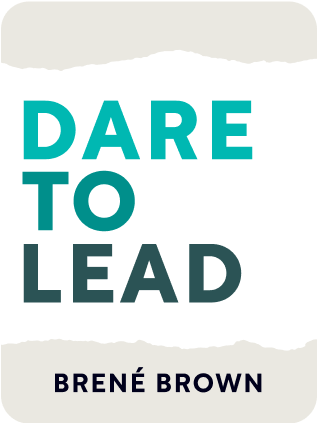

This article is an excerpt from the Shortform book guide to "Dare to Lead" by Brené Brown. Shortform has the world's best summaries and analyses of books you should be reading.
Like this article? Sign up for a free trial here .
Is learning how to deal with failure at work important? How do you develop failure resilience?
Knowing how to deal with failure at work helps you handle risks and try new ideas because you are confident in your ability to recover from any setback. You develop failure resilience by recognizing and questioning your emotional response to failure. You must also unravel any story you create around past failures.
Read more about how to deal with failure at work.
Developing Failure Resilience
The fourth courage-building skill is developing failure resilience—that is, mastering how to deal with failure at work, and moving on after something goes wrong. This is an essential skill for leaders to teach, because people are more likely to take risks and try new ideas when they’re confident in their ability to recover from any setback.
Unfortunately, many leaders teach failure resilience after a failure has already happened. Imagine teaching a skydiver how to land once they’ve already hit the ground—you’ll be dealing with a lot of broken bones and a long recovery. In the same way, if you don’t teach your team members how to “land,” you’ll end up wasting time recovering from problematic behaviors—such as covering up mistakes, blaming others, or perfectionism—that are based in the fear of failure. Learning how to deal with failure at work from the very beginning of the onboarding process—normalizes failure, and signals that team members will be supported, not shamed, when (not if) it happens.
Teaching employees how to deal with failure at work is more important now than ever, as millennials and GenZ enter the workforce. These generations are often not well-equipped to handle setbacks, due to being overprotected by their parents. Because their parents focused on paving the road for them, instead of preparing them for the bumpy road, they haven’t been exposed to the risk of failure and are prone to reacting defensively to any failures, real or perceived.
Mastering how to deal with failure at work requires the two components of failure resilience: 1) recognizing and questioning your emotional response to failure, and 2) unraveling the story you create around failure.
Recognizing and Questioning Your Emotional Response
As with shame resilience, the first step to learning how to deal with failure at work is recognizing and questioning your emotional response to failure. It’s not important to know exactly what you’re feeling. You just need to know that your emotions have been triggered in some way. Failure responses can take many forms—physical or mental—and are very specific to you. You might feel generally overwhelmed, or like you have a pit in your stomach. You might feel like crying or find yourself unable to stop replaying a conversation in your head.
If you know your specific failure response, you can identify when it’s happening—this should cue you to take a moment to think about the source of your emotions. What happened? Why are you reacting to it negatively?
This first step of consciously slowing down and thinking through your emotions is vital to a productive failure response. If you don’t have your emotions in check, they’ll drive you to defensive behaviors. Those who recognize and think through their emotions can respond thoughtfully to failure instead of reacting negatively. However, instead of facing their vulnerability and doing the hard work of engaging with their negative emotions, most people choose the easier route of pushing those emotions aside or onto other people.
Unraveling the Story You Create About Failure
Thinking through the failure and what really happened is important because in response to failure, your brain naturally makes up a story to explain what happened. Unfortunately, this story is almost never true—instead, it’s pieced together by incomplete information, and usually concludes with a worst-case scenario.
It’s very hard to resist piecing together incomplete information to make a story, because patterns and connections coming together gives your brain a jolt of dopamine. You’re wired to look for and invent connections and patterns in the absence of complete information. Imagine that a colleague spoke to you curtly. You’d likely immediately think, “Jane is being short with me today, I must have done something to bother her.” Your brain invented a connection between your actions and Jane’s tone—whereas if you’d gotten full information you would have known that she’s exhausted because her daughter was up all night, and her tone wasn’t intentional.
These stories usually conclude with a worst-case scenario because doing so gives you the opportunity to preemptively protect yourself. Imagine your boss emails you, “We need to talk.” You think he’s upset about a report you turned in late and is going to yell at you or even fire you, so you avoid speaking to him all day. It turns out he just wanted to talk about the new intern’s performance. By protecting yourself against the imagined worst-case scenario, you’ve wasted the day harboring anxiety and avoiding a meeting.

———End of Preview———
Like what you just read? Read the rest of the world's best book summary and analysis of Brené Brown's "Dare to Lead" at Shortform .
Here's what you'll find in our full Dare to Lead summary :
- A breakdown of the four courage-building skills that make up brave leadership
- The three reasons why most people avoid vulnerability
- How to recover and move on quickly from failure






